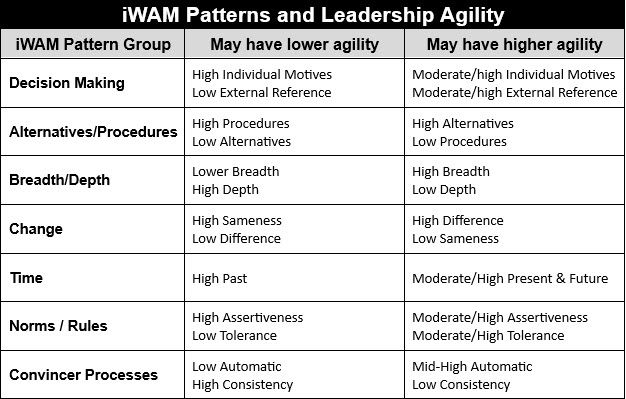Does Motivational Agility Matter in Effective Leadership?
When reviewing the competencies and characteristics that define effective leadership, we typically find "agility" in the top ten.
What Do We Mean by Agility in Leadership?
Gary Laney, in his LinkedIn post on the Top 10, shows "Adaptable" as #9. Here is the definition he provided:
"To be agile is to be quick and alert. To be adaptable is to be willing and able to change. Therefore, speed, willingness, and capability to change are the key. Together, they form a powerful leadership superpower. As your work and environment change on an increasingly rapid basis, you need to be open to shifting, getting feedback, and beginning again."
Notice the use of the words "willing" and "willingness" in the definition. Those words suggest an element of "want to" (motivation) in agility.
Lombardo and Eichinger of the Lominger Institute developed a well-known competency framework. Here are two competencies that are related to leadership agility:
Learning on the Fly: Learns quickly when facing new problems; a relentless and versatile learner; open to change; analyzes both successes and failures for clues to improvement; experiments and will try anything to find solutions; enjoys the challenge of unfamiliar tasks; quickly grasps the essence and the underlying structure of anything.
Strategic Agility: Sees ahead clearly; can anticipate future consequences and trends accurately; has broad knowledge and perspective; is future oriented; can articulately paint credible pictures and visions of possibilities and likelihoods; can create competitive and breakthrough strategies and plans.
Note that there are elements of their definitions which are not competencies: "open to change," "enjoys the challenge of unfamiliar tasks," and "is future oriented." These are what we classify as characteristics. So there is something more than competencies involved.
A crucial component of what else is involved is motivation.
This takes us to the saying:
Some want to, but can't.
Some can, but don't want to.
Being effective takes both "want to" and "can".
We're focused on the "want to" portion of agility here. Unless the motivation is in place to want to adapt and change quickly – whether its strategy or execution – an individual's competency may ultimately be in vain.
The iWAM and Motivational Agility
Because we do organizational and leadership development and not just assessment, we get to know the organizational context in which people work as well as the individuals themselves.
This exposure provides us with a larger perspective than just an assessment would provide. Over the years we've not only assessed managers and leaders (motivation and behaviors), but also worked with them. As a result we began to link the motivational and attitudinal patterns in the iWAM to complex behaviors like agility.
Here's our overview of the patterns that may be linked to agility and how one might score on the respective scale.

This is, of course, not an all-or-none situation. The individual's context and role may influence both the score and what is appropriate. For example, someone in quality control may be less agile than someone in research and development.
So What?
Ah, the crucial question: so what?
If your organization is focused on competencies and the key elements of performance which includes a behavior such as agility, they may be overlooking a critical piece of information related to what the individuals "want to do"; that is, their motivation.
While it is true that someone will do something they can do (ability) but don't want to do (motivation), they are not likely to do it for an extended period of time. That period may be a day, week, month, or longer, but only until the individual finds an option to the present role and requirements. It's not sustainable behavior.
This might be something to consider as you map the future of leadership in your organization. There are two questions:
- What motivators are important to a leader's agility?
- How do we know if they have this motivation?